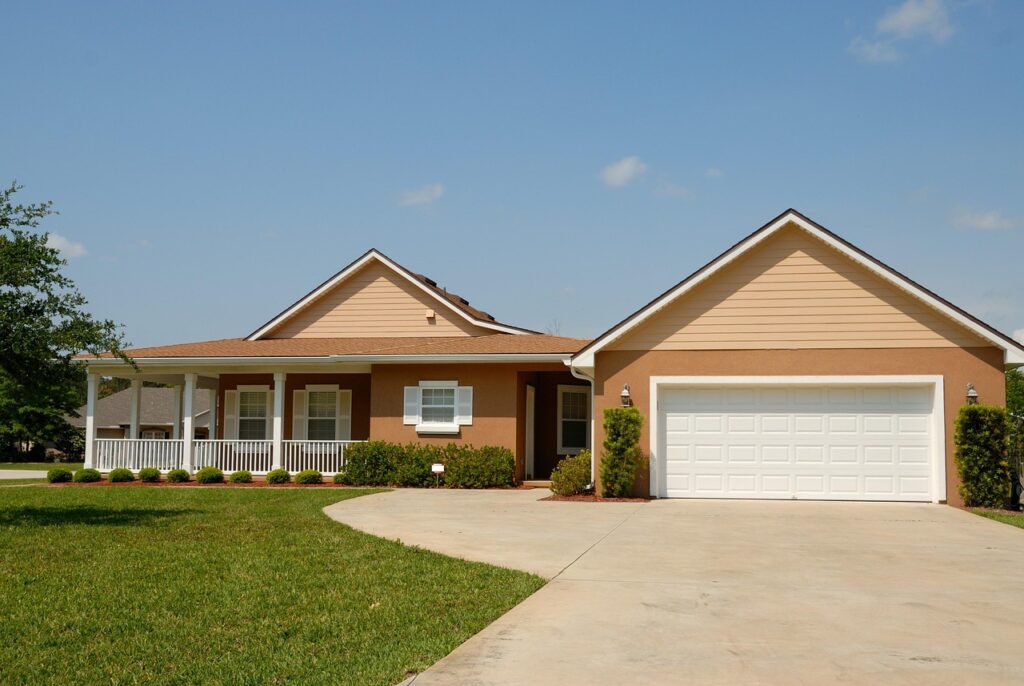Concrete driveways represent significant investments that deserve protection through consistent maintenance and preventive care throughout their lifespan. Professional maintain concrete driveway tips help homeowners preserve their surfaces while avoiding expensive repairs and premature replacement costs. Simple maintenance routines performed regularly prevent small problems from becoming major structural issues that compromise safety and appearance. Smart homeowners understand that prevention costs far less than restoration when concrete surfaces deteriorate beyond basic repair.
Daily Cleaning Habits That Make a Difference
Sweep your concrete driveway regularly to remove dirt, leaves, and debris that can stain surfaces over time. Quick removal of oil spills, automotive fluids, and organic materials prevents permanent staining that requires expensive professional cleaning. Rinse away salt residue from winter applications before it penetrates concrete pores and causes internal damage. These simple daily actions preserve your driveway’s appearance while preventing costly restoration projects later.
Address spills immediately with absorbent materials like cat litter or sawdust to prevent liquids from penetrating concrete surfaces. Keep a stiff brush handy for scrubbing away stubborn stains before they set permanently into the concrete matrix. Regular cleaning also helps you spot developing problems early when repairs are simple and inexpensive.
Seasonal Care Routines for Year-Round Protection
Spring cleaning removes winter salt damage and prepares surfaces for annual sealing applications that protect against moisture penetration. Summer maintenance focuses on stain removal, crack monitoring, and ensuring proper drainage around concrete edges and joints.
Fall preparation includes cleaning, sealing, and removing organic debris that can cause staining during winter freeze-thaw cycles. Winter protection involves careful ice removal techniques that prevent surface damage from metal tools and harsh chemicals.
Document seasonal maintenance activities with photos that help track changes and identify developing problems over time. Schedule major maintenance tasks during optimal weather conditions when materials cure properly and provide maximum protection. Consistent seasonal care extends concrete lifespan significantly beyond surfaces that receive only reactive maintenance.
Crack Prevention and Early Intervention
Monitor concrete surfaces regularly for hairline cracks that indicate settling, thermal stress, or moisture-related expansion within the material. Fill small cracks immediately with appropriate concrete crack filler to prevent water infiltration and freeze-thaw damage.
Apply concrete sealer annually to protect against moisture penetration that causes internal damage and surface deterioration. Proper drainage around driveway edges prevents water pooling that accelerates crack formation and surface breakdown.
Control vegetation growth near concrete edges where roots can create pressure that leads to cracking and displacement. Use expansion joint materials in long driveways to accommodate thermal movement without surface cracking. Address drainage problems promptly to prevent water accumulation that undermines concrete stability and causes structural damage.
Stain Removal Techniques That Actually Work
Oil stains respond well to degreasing agents followed by pressure washing with hot water for complete removal. Rust stains require specialized rust removers that won’t damage concrete surfaces or alter their natural coloration. Organic stains from leaves, berries, or other plant materials often respond to bleach solutions applied carefully to affected areas. Test cleaning products on inconspicuous areas before applying to visible surfaces to avoid unexpected discoloration.
Power washing provides effective cleaning for general maintenance but requires proper pressure settings to avoid surface damage. Commercial concrete cleaners offer stronger cleaning power for stubborn stains that resist household cleaning products. Allow adequate drying time between cleaning and sealing applications to ensure proper adhesion and performance.
- Sweep regularly to prevent debris accumulation and staining
- Address spills immediately before they penetrate concrete surfaces
- Apply quality concrete sealer annually for moisture protection
- Fill small cracks promptly to prevent water infiltration damage
- Maintain proper drainage around driveway edges and surfaces
- Use appropriate ice removal techniques that won’t damage concrete
- Test cleaning products on hidden areas before widespread application
- Schedule maintenance during optimal weather conditions for best results
Proper Sealing Application Methods
Clean concrete thoroughly before applying sealer to ensure proper adhesion and uniform coverage across all surfaces. Choose appropriate sealer types based on your concrete’s age, condition, and exposure to traffic and weather conditions. Apply sealer during optimal weather conditions with temperatures between 50-90°F and no rain expected for 24 hours. Use proper application tools like sprayers or rollers that provide even coverage without puddles or missed areas.
Allow adequate drying time between coats when multiple applications are recommended by manufacturer specifications for your sealer type. Maintain wet edges during application to prevent overlap marks that create uneven appearance and protection levels. Quality sealers provide 2-3 years of protection when applied correctly under proper conditions.
Winter Protection Strategies
Use ice melt products specifically designed for concrete rather than rock salt that can damage surfaces through chemical action. Apply ice melt sparingly to minimize chemical exposure while maintaining safe walking and driving conditions during winter weather. Remove snow promptly to prevent freeze-thaw cycles that stress concrete and create cracking over multiple seasons. Use plastic shovels or rubber-edged tools that won’t scratch or chip concrete surfaces during snow removal.
Avoid metal tools that can gouge concrete surfaces and create areas where moisture can penetrate and cause damage. Apply pre-treatment products before storms to prevent ice bonding that requires aggressive removal techniques harmful to concrete. Monitor for ice dam formation around drainage areas that can cause water backup and surface damage.
Professional Maintenance Services
Schedule professional concrete cleaning every 2-3 years to remove embedded dirt and stains that household methods cannot eliminate effectively. Professional pressure washing uses appropriate equipment and techniques that clean thoroughly without damaging concrete surfaces or protective sealers. Specialized treatments for stubborn stains often require professional equipment and expertise that homeowners don’t possess or want to invest in.
Professional sealing services ensure proper surface preparation and application techniques that maximize sealer performance and longevity throughout varying weather conditions.
Many professionals offer maintenance plans that include regular cleaning, sealing, and minor repairs at discounted rates. Professional assessment helps identify developing problems before they require expensive repairs or complete surface replacement.










